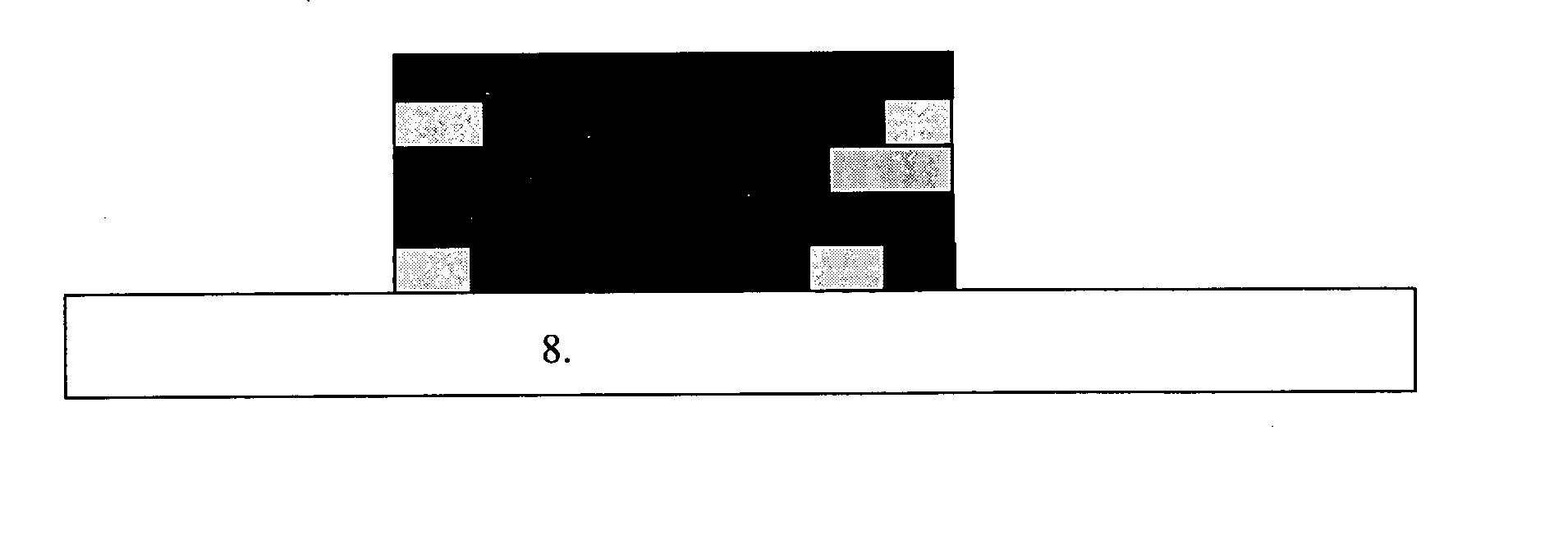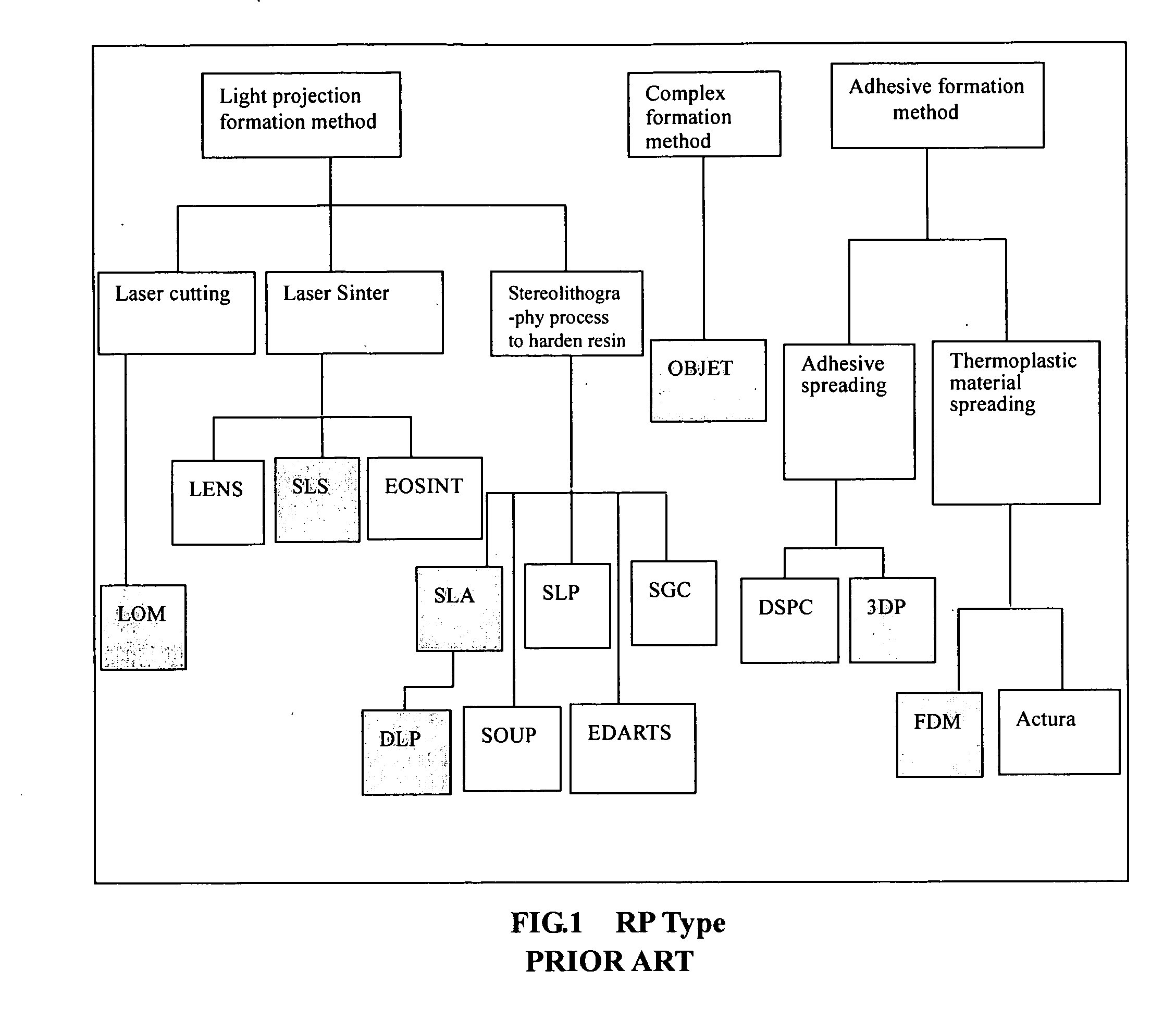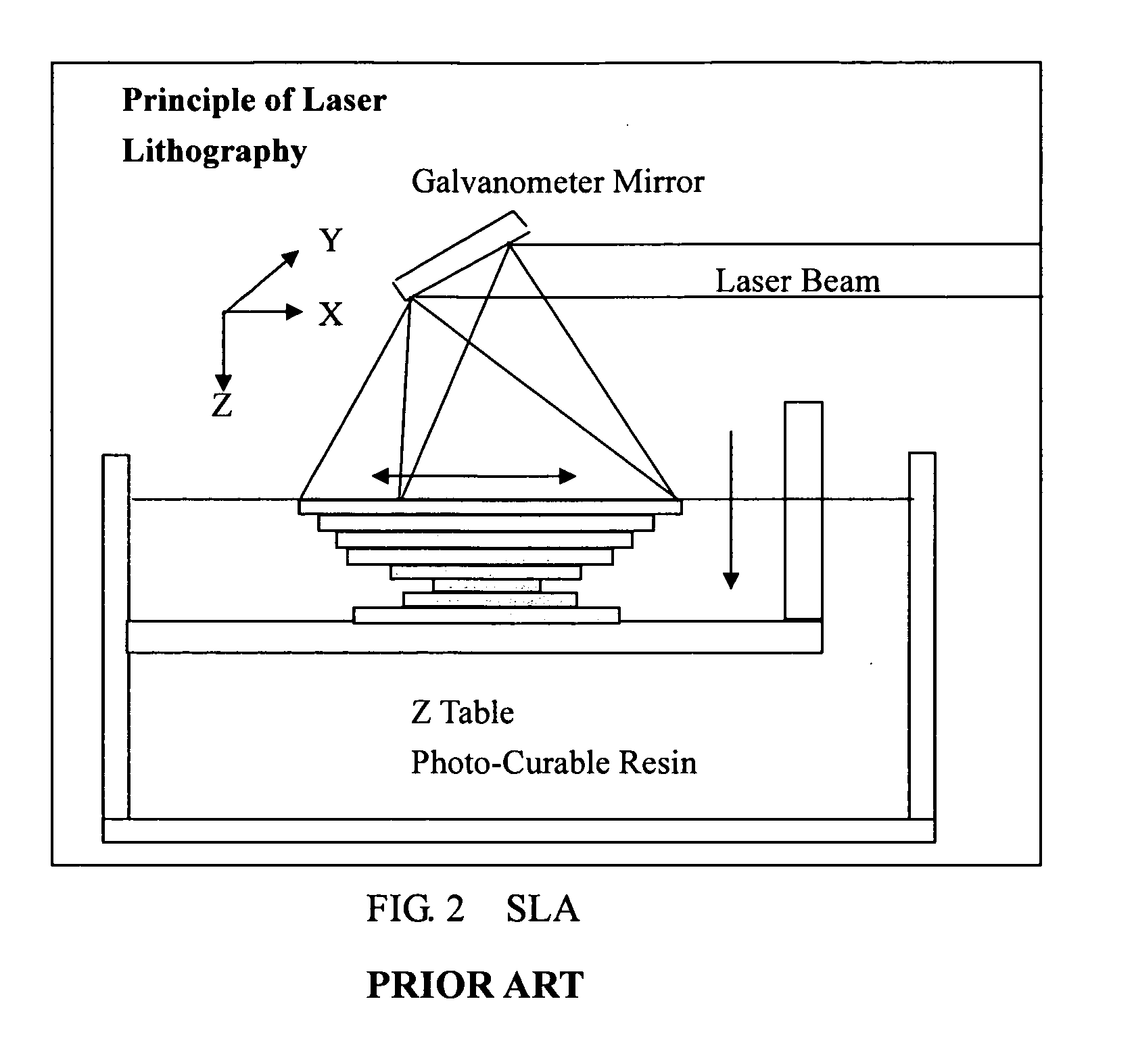Method of manufacturing rapid prototyping workpiece by using laser transfer printing technology
a technology of laser transfer printing and workpieces, applied in the direction of manufacturing tools, recording devices, instruments, etc., can solve the problems of cnc carving, cnc carving also has limitations on molding, sla method still, etc., to facilitate the next loop of actions, save work hours, materials and costs, and enhance the precision of the workpiece
- Summary
- Abstract
- Description
- Claims
- Application Information
AI Technical Summary
Benefits of technology
Problems solved by technology
Method used
Image
Examples
Embodiment Construction
[0073] Referring to FIG. 9 for the manufacturing process employing the method of manufacturing rapid prototyping workpiece in accordance with the present invention, the basic manufacturing procedure is described as follows: [0074] Step 1: An electric roll spreads the static electricity evenly to the surface of photo-conductive drum. [0075] Step 2: A laser beam or a visible light is projected onto the photo-conductive drum to conduct its electric charges and lower its electric potential. [0076] Step 3: When the photo-conductive drum rolls through the material cartridge, the material produces an electric attraction due to the potential difference and is attached onto the section exposed by the photo-conductive drum. [0077] Step 4: Use an insulating scraper to scrap the excessive thickness of the attached material. [0078] Step 5: Use an appropriate method to transfer the material printed on the photo-conductive drum to the working platform. [0079] Step 6: A point, line or plane light s...
PUM
| Property | Measurement | Unit |
|---|---|---|
| electric potential | aaaaa | aaaaa |
| thickness | aaaaa | aaaaa |
| pressure | aaaaa | aaaaa |
Abstract
Description
Claims
Application Information
 Login to View More
Login to View More - R&D
- Intellectual Property
- Life Sciences
- Materials
- Tech Scout
- Unparalleled Data Quality
- Higher Quality Content
- 60% Fewer Hallucinations
Browse by: Latest US Patents, China's latest patents, Technical Efficacy Thesaurus, Application Domain, Technology Topic, Popular Technical Reports.
© 2025 PatSnap. All rights reserved.Legal|Privacy policy|Modern Slavery Act Transparency Statement|Sitemap|About US| Contact US: help@patsnap.com



